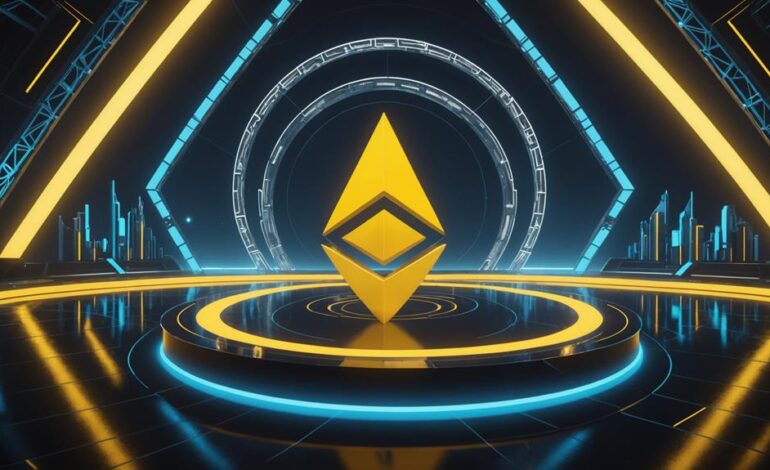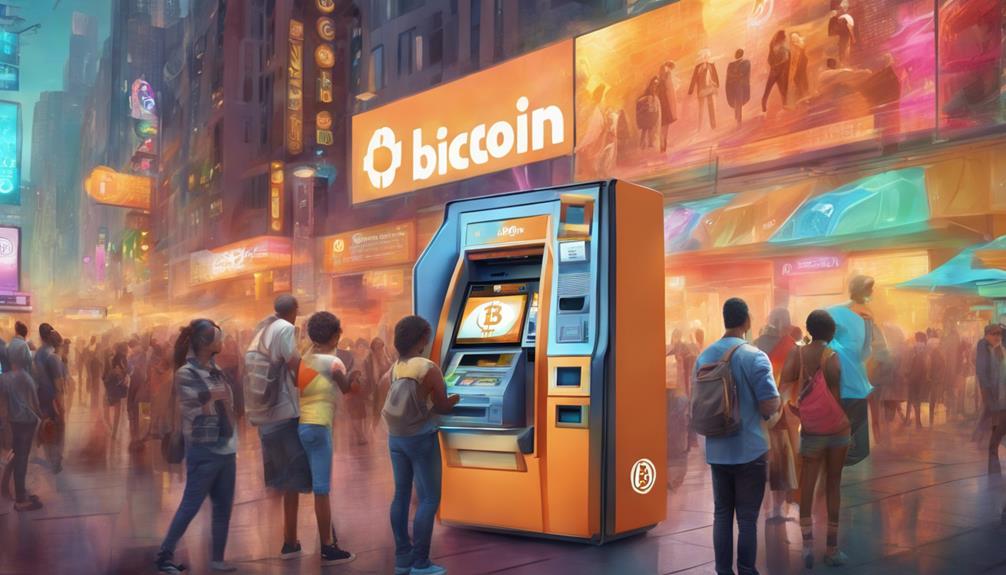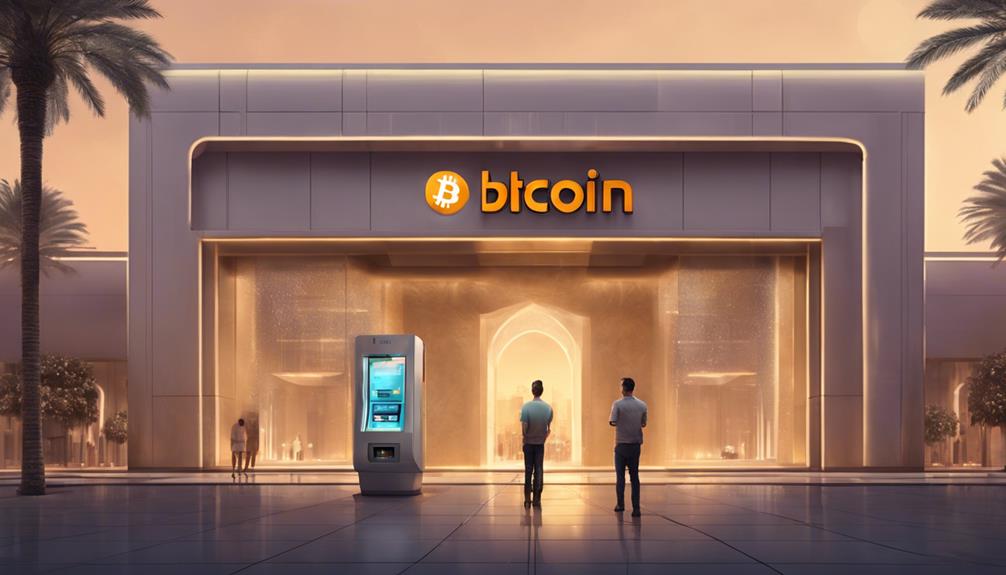Ethereum Vs Binance Smart Chain: Defi Trends 2024

As you navigate the shifting sands of the DeFi ecosystem in 2024, you'll find Ethereum and Binance Smart Chain (BSC) at the forefront, each offering unique advantages that could sway your investment and development decisions. With Ethereum's transition to ETH 2.0 aimed at solving longstanding scalability and energy efficiency issues, and BSC's continuous enhancements in transaction speed and cost-effectiveness, you're standing at a crossroads. Choosing which platform aligns with your DeFi strategy involves understanding these changes deeply. How will these platforms evolve by the end of the year, and what implications will these developments have on your projects? Let's explore the potential shifts in the landscape.
Overview of Ethereum and BSC

Dominating the DeFi landscape, Ethereum and Binance Smart Chain (BSC) offer distinct platforms for blockchain development and cryptocurrency trading. You've likely heard of Ethereum, the pioneer in decentralized applications, famed for its robust and versatile ecosystem. It's where most developers cut their teeth on blockchain technology, creating everything from simple smart contracts to complex decentralized apps.
On the other side, you've got BSC, Binance's answer to Ethereum's congestion and high fees. Launched in 2020, BSC provides you with a similar functionality but with a focus on scalability and cost-efficiency. It's become a hotspot for traders and developers looking for faster transactions and lower costs.
While both platforms share some similarities in their purpose, they cater to different needs and preferences within the DeFi community. Ethereum remains the go-to for groundbreaking projects, especially those that prioritize decentralization.
Meanwhile, BSC appeals to users more concerned with transaction speed and fees.
Navigating these platforms, you'll find that each has carved out its niche, shaping the way you interact with digital assets and decentralized applications. As you delve deeper into their ecosystems, you'll discover the unique opportunities and challenges each presents in the evolving world of DeFi.
Key Features Comparison
Let's delve into the key features that set Ethereum and Binance Smart Chain apart in the DeFi space.
You'll find that Ethereum, often celebrated as the pioneer of smart contract platforms, offers unmatched security and decentralization. Its consensus mechanism, transitioning to proof-of-stake, emphasizes sustainability and reduced energy consumption, which might resonate with your eco-conscious sensibilities.
On the other hand, Binance Smart Chain (BSC) operates with a unique dual-chain architecture. This allows you to transfer assets between the Binance Chain for fast trading and BSC for smart contract functionalities. It's particularly appealing if you're looking for flexibility in trading and decentralized application (dApp) operations.
Ethereum's vast developer community is a treasure trove of continuous innovations and reliable dApp support. This vast network not only fosters trust but also propels a rich ecosystem of decentralized applications.
In contrast, BSC offers a more centralized model with close ties to the Binance ecosystem, potentially offering higher transaction throughput but with trade-offs in decentralization.
These platforms cater to different preferences in the DeFi community—Ethereum prioritizing decentralization and security, while BSC leans towards scalability and integration with Binance's trading facilities.
Your choice might hinge on what aspects—security, innovation, or scalability—hold more weight for your DeFi engagements.
Transaction Speed and Costs

Exploring the realm of transaction speed and costs, you'll notice significant differences between Ethereum and Binance Smart Chain that could sway your platform choice. Ethereum, being the older of the two, often struggles with network congestion leading to higher transaction fees, especially during peak usage. The average transaction cost fluctuates significantly, influenced by network activity and the complexity of the transactions.
On the other hand, Binance Smart Chain boasts a higher transaction throughput and significantly lower fees. The network achieves this by using a consensus model that's more centralized than Ethereum's, which allows for quicker transaction validation times. This means you're not only paying less per transaction but also getting faster confirmations.
However, it's essential to consider the trade-offs. Ethereum's shift to a proof-of-stake model with its Ethereum 2.0 upgrade aims to address these issues by enhancing scalability and reducing fees.
This upgrade is anticipated to close the gap in speed and cost between Ethereum and Binance Smart Chain.
Ultimately, your choice might hinge on what you value more: the decentralization and security features of Ethereum, or the cost-effectiveness and speed that Binance Smart Chain offers. Each has its merits depending on your needs and the scale of your operations.
DeFi Project Diversity
While evaluating DeFi platforms, you'll find that the diversity of projects available on Ethereum far surpasses that of Binance Smart Chain. Ethereum's ecosystem is bustling with a myriad of DeFi applications ranging from lending protocols and decentralized exchanges to complex derivative platforms. You've got options like Uniswap, Aave, and Compound, which not only dominate in terms of total value locked but also in innovation and user trust.
On the other hand, Binance Smart Chain hosts a smaller, albeit growing, selection of DeFi projects. Platforms like PancakeSwap and Venus are notable, yet they often mirror the functionalities found on Ethereum rather than pioneering new features. This can make Binance seem less attractive if you're craving variety and cutting-edge development.
You might also notice that Ethereum's community is a hotbed for experimental projects, thanks to its longer history and broader developer base. This leads to a richer environment where new ideas are constantly tested.
Binance Smart Chain is catching up, but it still lacks the same level of project experimentation. So, if you're after the forefront of DeFi innovation, Ethereum is likely your best bet.
Smart Contract Capabilities

Building on the variety of DeFi projects, the capabilities of smart contracts on Ethereum and Binance Smart Chain also play a significant role in shaping their respective ecosystems.
You'll find that Ethereum's smart contract functionality is powered by Solidity, a programming language that offers robust features and flexibility. This allows you to deploy complex decentralized applications (dApps) that can handle intricate financial functions. Ethereum's smart contracts are Turing-complete, meaning they can solve any computation problem given enough resources, which is essential for creating diverse and sophisticated DeFi applications.
On the other hand, Binance Smart Chain (BSC) uses a similar programming model but optimizes for higher transaction throughput and lower fees. BSC's compatibility with Ethereum's tools and dApps means you can easily migrate projects between the two chains. However, BSC's focus is on performance and scalability, which appeals if you're looking to execute transactions more swiftly and cost-effectively.
Both platforms support a wide range of DeFi applications but differ in their approach and underlying technology philosophies. Whether you prioritize flexibility and the extensive support community of Ethereum or the speed and low-cost transactions of BSC, your choice will significantly impact the capabilities and performance of your DeFi projects.
Security Measures and Risks
Security in DeFi is paramount; you must understand the measures and risks associated with Ethereum and Binance Smart Chain. Both platforms employ robust mechanisms to secure your transactions, but they're not foolproof.
Ethereum, being the older of the two, has a more battle-tested network. Its consensus mechanism, transitioning from Proof of Work to Proof of Stake, aims to enhance security and reduce potential attacks. However, the complexity of Ethereum's smart contracts can be a double-edged sword. More complex contracts can harbor unnoticed bugs, making them susceptible to exploits if not thoroughly audited.
On the other hand, Binance Smart Chain (BSC) operates on a Proof of Staked Authority model which combines elements of Proof of Stake and delegated authority. This structure allows for faster transactions but centralizes validation power to a smaller group of validators, potentially increasing vulnerability to collusion or security breaches.
You need to be vigilant about the updates and community discussions regarding both platforms. Smart contract audits are crucial, and skipping them can expose you to risks. Always verify the security protocols of any new DeFi project and consider diversifying your investments to mitigate potential threats.
User Base and Adoption Rates
The user base and adoption rates of Ethereum and Binance Smart Chain are critical indicators of their success and influence in the DeFi space. You've probably noticed that Ethereum has traditionally held a larger share of the market, thanks to its first-mover advantage and robust developer community. Its platform hosts a multitude of applications, drawing in a diverse audience ranging from hardcore DeFi enthusiasts to casual users intrigued by the promise of decentralized finance.
However, Binance Smart Chain (BSC) has rapidly caught up, leveraging its lower transaction fees and faster processing times to attract users, particularly those frustrated with Ethereum's high gas costs and sometimes sluggish performance during peak times. BSC's strategy of positioning itself as a more accessible alternative has resonated well, especially in regions where cost sensitivity is a major factor in adoption.
You'll find that the choice between Ethereum and BSC often comes down to a trade-off between the security and richness of Ethereum's more decentralized approach versus the speed and cost-efficiency of BSC. As you weigh your options, consider not just the numbers but also what aligns best with your needs and values in the evolving landscape of DeFi.
Governance and Community Influence
Governance models within Ethereum and Binance Smart Chain significantly shape how decisions are made and how effectively communities can influence the platforms' futures.
You'll find that Ethereum operates with a decentralized governance model, heavily relying on community consensus for upgrades and changes. This means you have a voice through mechanisms like Improvement Proposals (EIPs), where you can propose or vote on changes if you're actively involved.
On the other hand, Binance Smart Chain (BSC) features a more centralized approach. It's governed by a select group of validators, making decision-making faster but limiting your direct influence unless you're one of the few top stakeholders. You might feel this restricts broader community involvement but it does streamline rapid development and implementation of new features.
Your impact on either platform varies significantly. With Ethereum, you're part of a broad democratic process, ideally giving you a say in its evolution. In contrast, BSC's model might seem restrictive, but it offers stability and quick decisions, which can be crucial in fast-paced market environments.
Understanding these governance structures helps you choose where to invest your time and resources based on how much direct influence you want over the platform's future developments. Choose wisely, as your involvement could shape the landscape of decentralized finance.
Scalability Solutions and Updates

Scalability remains a critical challenge as both Ethereum and Binance Smart Chain strive to support the burgeoning demands of the DeFi sector. You've likely noticed that as more users and decentralized applications flock to these platforms, the pressure on network performance and speed has intensified.
To address this, Ethereum has been progressively rolling out its Ethereum 2.0 upgrades, which include a shift to proof of stake and the introduction of shard chains. These changes aim to enhance throughput and reduce transaction costs significantly.
On the other hand, Binance Smart Chain has implemented a dual-chain architecture. This solution allows you to transfer assets between the Binance Chain, designed for fast trading, and Binance Smart Chain, which enables smart contracts and creates a flexible and scalable ecosystem for DeFi applications. Moreover, BSC has been working on optimizing its block time and transaction processing efficiency to reduce congestion and fees.
Both platforms are pushing the boundaries of what blockchain technology can achieve, ensuring that you, the user, get faster, cheaper, and more reliable services. Such advancements are crucial as they not only improve user experience but also foster broader adoption and innovation within the DeFi space.
Future Predictions and Trends
Looking ahead to 2024, we can anticipate several exciting developments in the DeFi ecosystems of Ethereum and Binance Smart Chain.
You'll likely see Ethereum's continued push towards scalability and efficiency with the progressive deployment of ETH 2.0 upgrades, which aim to drastically reduce gas fees and increase transaction speeds. This could make Ethereum more appealing for both new and existing DeFi applications, potentially increasing its market share in the DeFi space.
On the other hand, Binance Smart Chain (BSC) is expected to leverage its compatibility with Ethereum to attract more developers and users.
BSC's focus will probably remain on enhancing transaction efficiency and lowering costs, making it an increasingly viable alternative for DeFi users who prioritize speed and affordability.
Furthermore, both platforms might enhance their security measures to address the persistent issues of hacks and vulnerabilities within DeFi projects. This would boost user confidence and potentially increase the total value locked in DeFi protocols across both chains.
Lastly, watch out for a possible increase in cross-chain collaboration features, enabling smoother interoperability between Ethereum and BSC. This could facilitate a more integrated DeFi ecosystem, where you can enjoy the unique advantages of both platforms seamlessly.
Conclusion
As you navigate the evolving DeFi landscape in 2024, you'll see Ethereum and BSC continue to dominate. Ethereum will likely enhance its leading edge with ETH 2.0, focusing on scalability and innovation, while BSC might boost its appeal through improved security and faster transactions. Both platforms are gearing up to offer you more efficient and diverse DeFi services. So, keep an eye on their developments, as they will shape your choices and opportunities in the decentralized finance space.





